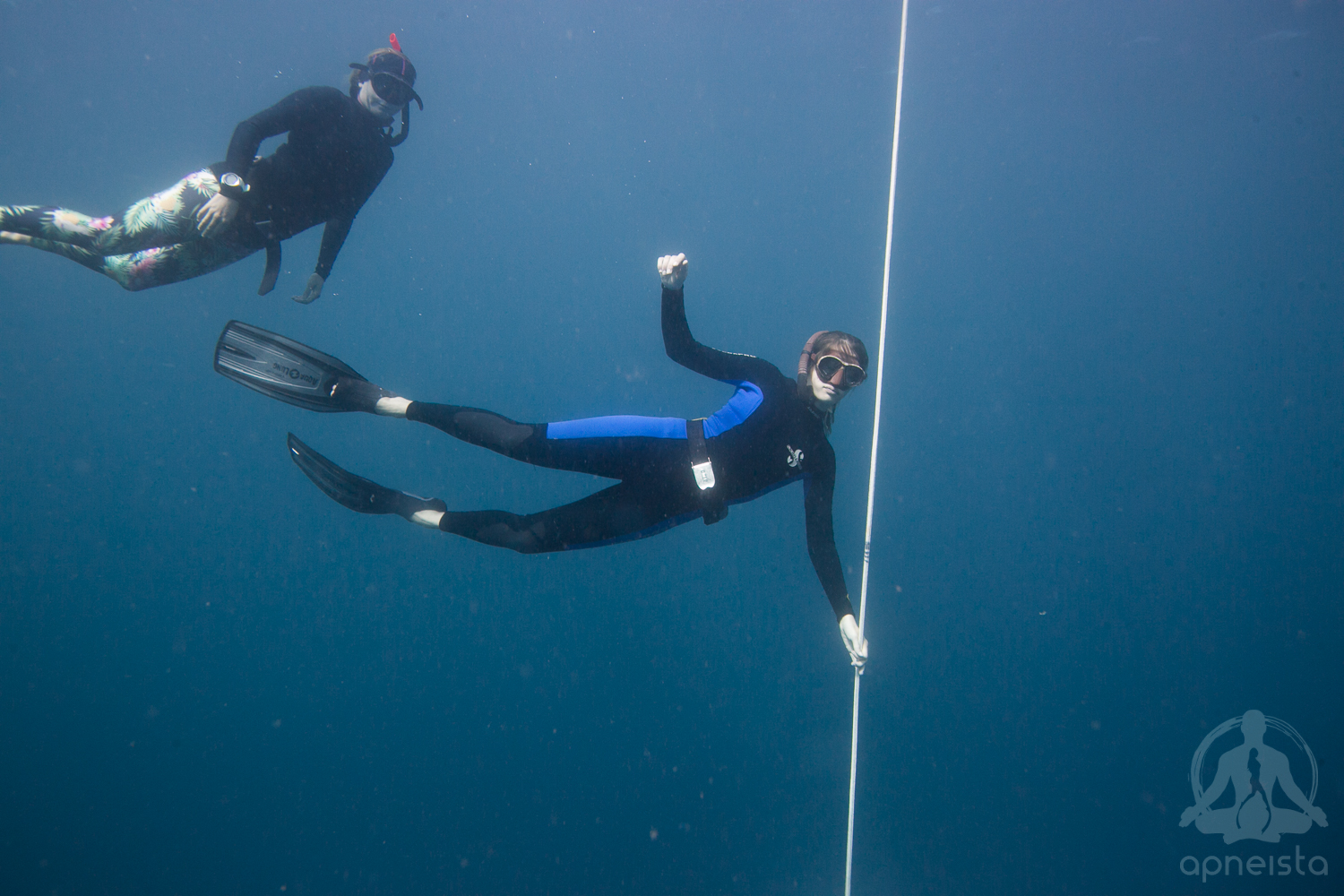Unable to breathe, and floating through the deep, blue ocean. You find yourself moving deeper, and deeper, into the abyss of the sea. You feel pressure in your sinuses as you move towards the bottom of the ocean. You equalize. You feel pressure on your lungs, as though someone were compressing your body making you feel smaller, but for some strange reason, it feels really good. Your mind is as clear as the water, and even though you don’t know how much longer you’ll be able to hold your breath, you feel at peace. You feel calm. And you feel completely present — floating in this moment, and this moment only. Suddenly, you feel the CO2 levels rising in your blood stream telling your mind that you need another breath. You smile, and slowly float your way towards the surface to refill your lungs with fresh, cool oxygen.
This is free diving.
From the outside looking in, you might see free diving as simply swimming under the ocean holding your breath. But it’s much, much more than that. It’s an act of meditation under water. It’s an opportunity to move out of your mind, and into your body.
I first was drawn to free diving after meeting a friend in Sri Lanka who had done the course at Apneista, a free diving company on the east side of the island of Bali. I followed the company on their Instagram, and the free diving course and Apneista moved into the back of my mind.
Funny enough, two months later I happened to randomly be in Bali. A yoga teaching gig brought me over to the east side of Bali, in a town called Amed, and I happened to drive right by Apneista on the ride over to my new residence.
I instantly flash backed to the conversation I had with my friend a few months prior in Sri Lanka, and I knew it was a sign that I had to do the free diving course.
I quickly reached out to Matthew, the owner of Apneista, and he answered all of my questions and let me join the next course they offered.
The course taught me much more than how to dive under water. There is a whole science on how to hold your breath, and the instructor taught many skills on how to maximize the amount of time under water, all from a background mixed with science and yoga.
Not only were we practicing different yoga postures and breath techniques to understand our breath in our bodies, but we learned about the oxygen and CO2 levels and how they affect us. They even hooked oxygen readers around our fingers so we could practice holding our breath while observing how much oxygen remained in our system. It was especially amazing to see how the urge to breathe would arise, even with high oxygen levels left. They taught us to notice what the urge to take a breath was, and how to be with the sensation without reacting to it. I remember feeling an urge to breathe, and then looking at my oxygen level which was still 90% — more than enough oxygen to last a long time! I sat with the feeling, felt into it fully, and allowed myself to relax into the sensation. With techniques such as this, I was able to hold my breath 30 seconds longer.
When it was time to go out of the classroom and into the water, I didn’t know what to expect. But after diving under water for about an hour on and off, the only feeling I was left with was absolute clarity and absolute peace.
There is a stillness in the water that we as humans can all instantly connect to. We were first created in our mothers wombs, and the first 9 months of our lives were spent floating. As we reenter the water, we can instantly reconnect with this primal sensation of finding peace in the water.
In free diving, you will find yourself depending solely on this meditative state to keep you calm as you enter the deep ocean, not knowing if the breath in your lungs will be your last.
If you love yoga, breath, meditation, or simply find a place of connection in the water, I highly recommend trying out a free diving course. If you’re not fully convinced yet, check out this amazing Ted Talk featuring world champion free diver, Guillaume Nery, speaking to the ‘exhilarating peace’ found in free diving.


